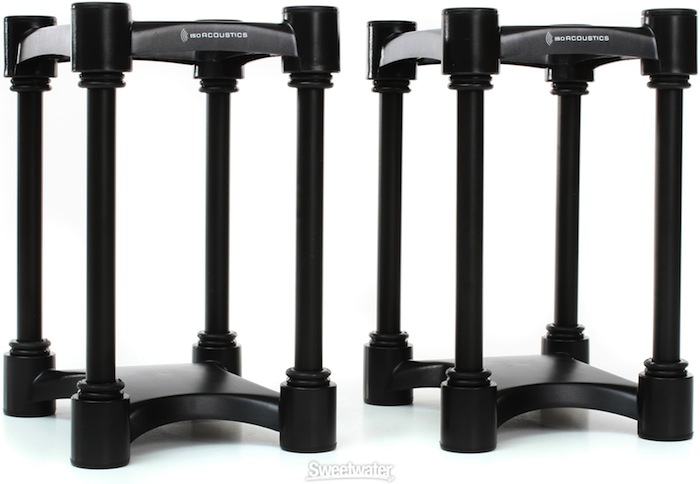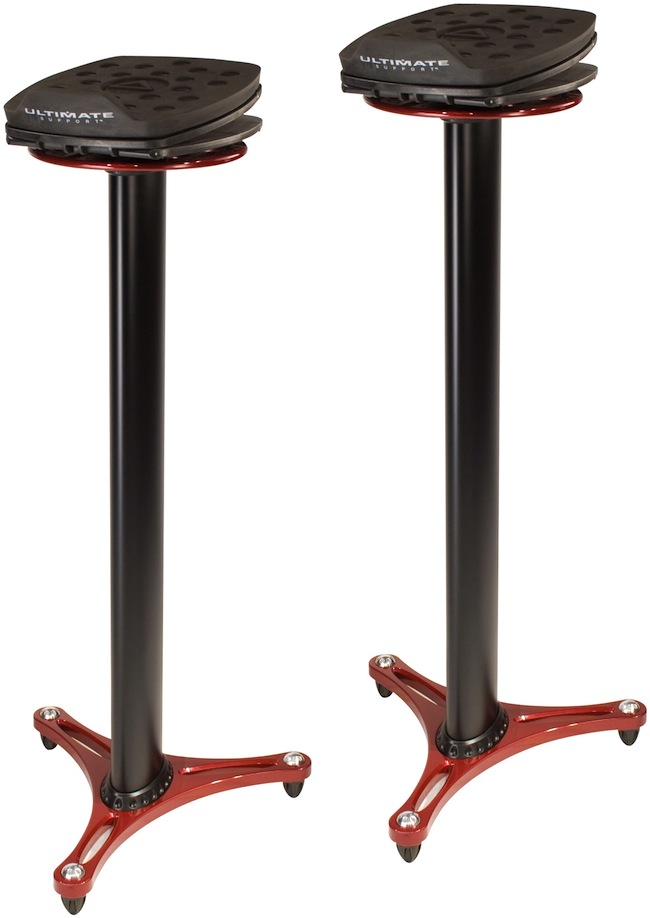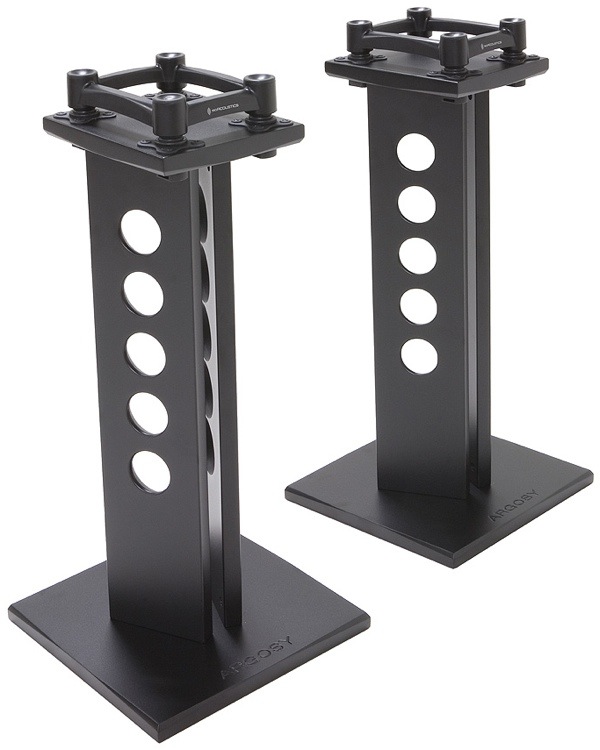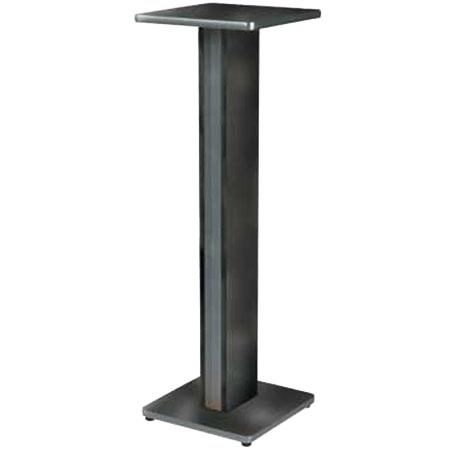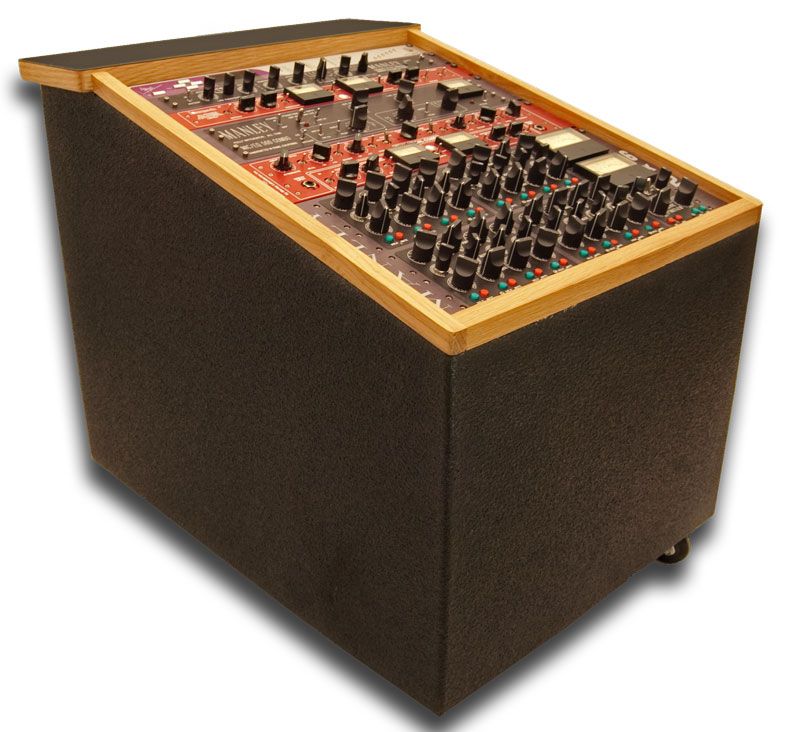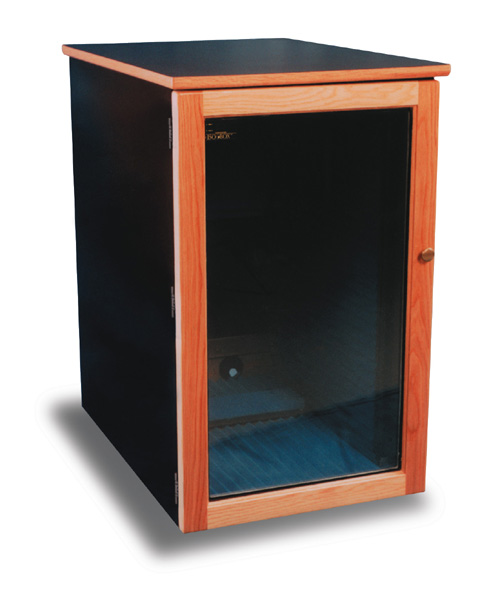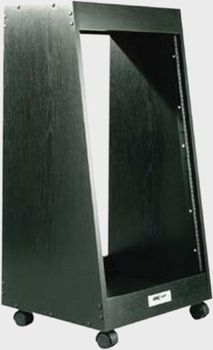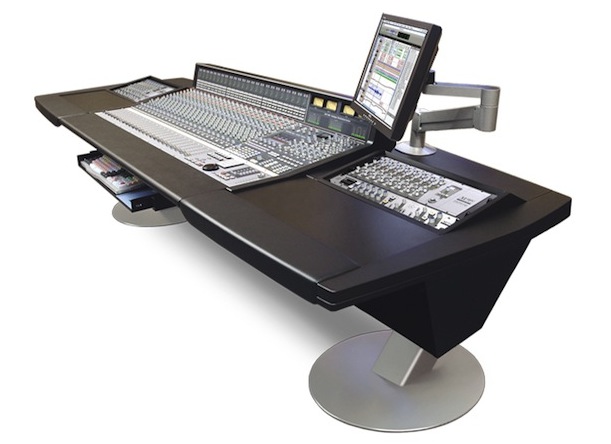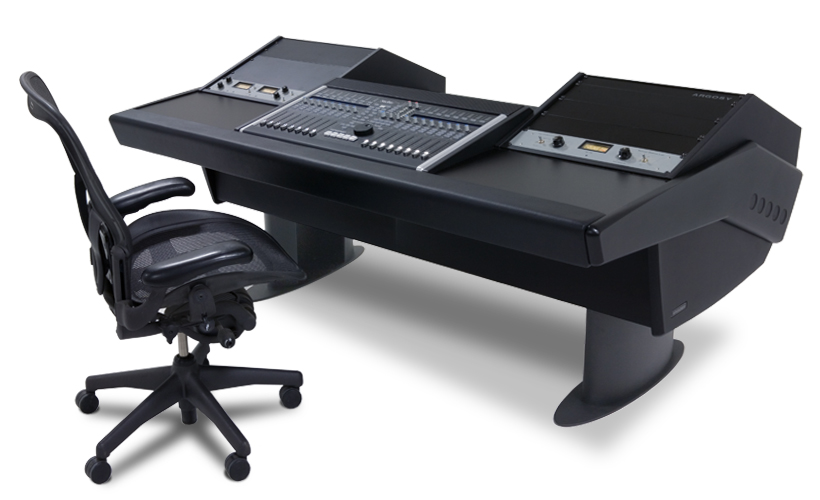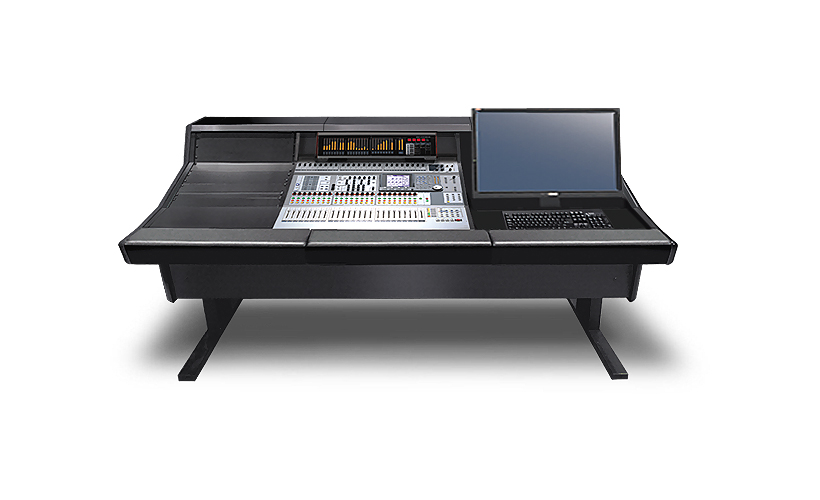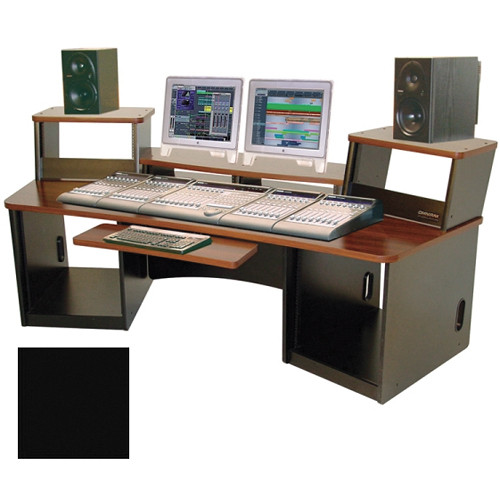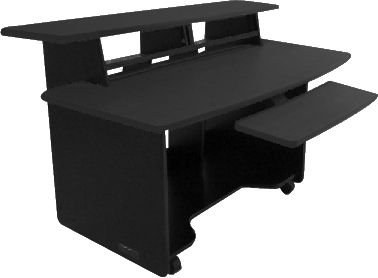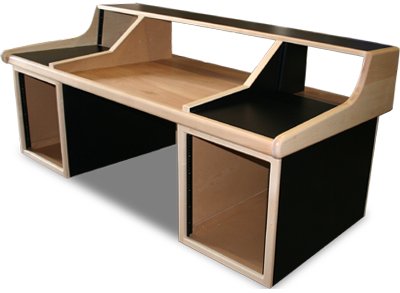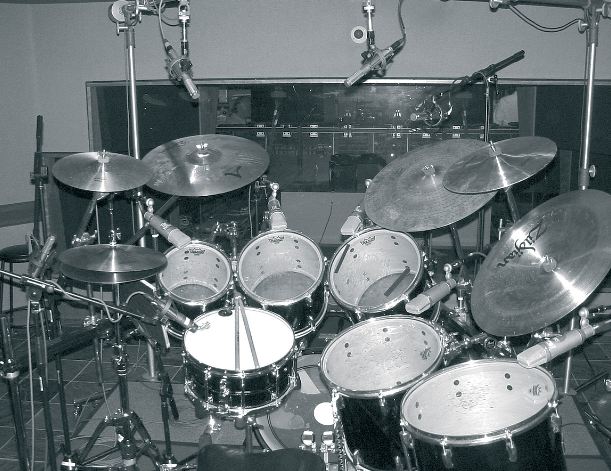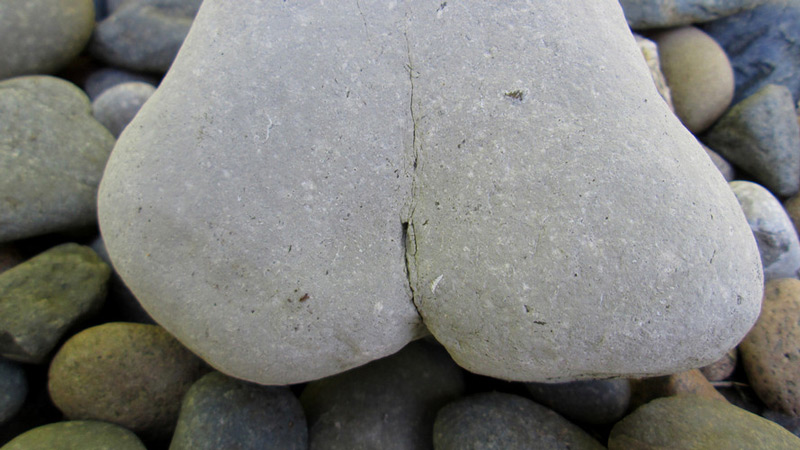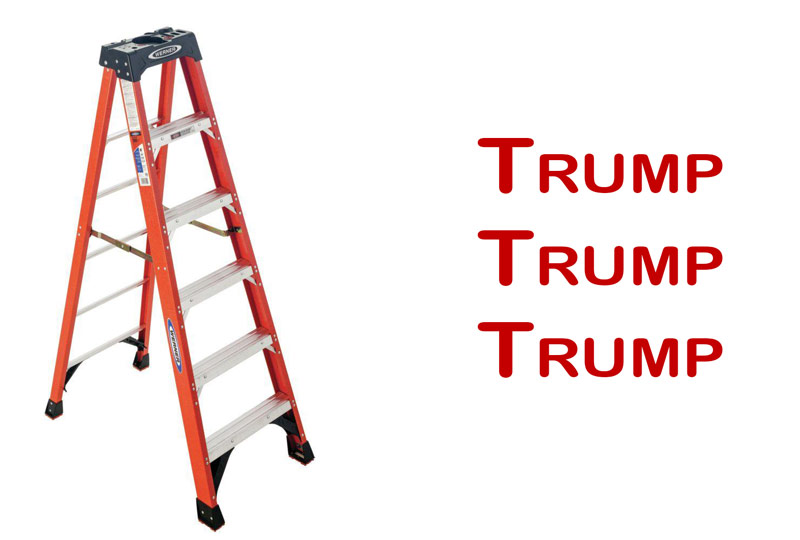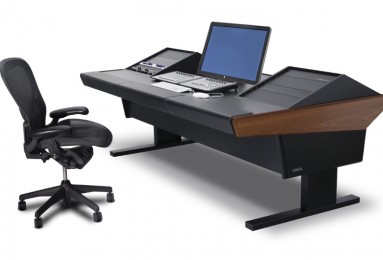
POLITUSIC has written a lot of about recording studio design, best studio gear for home studios, studio acoustics and set up… but we haven’t yet given much time to recording studio furniture, so here we go:
Most home studios get basic furniture that’s a desk to put a computer and your monitors, and maybe add onto that a rack sidecar to hold your rack gear. Once you reach the project studio level, you need a proper console desk that has a more integrated design like the Argosy pictured here.
Mostly, we prefer to custom build the console desk and racks, but that’s not always an option. In this article we’ll show you options for recording studio furniture you can buy, as well as some DIY studio furniture ideas.
There are three basics needs for music studio furniture (and most people are looking to buy something that performs all three functions):
1. Studio monitor stands
2. Computer workstation / Audio console desk
3. Studio rack for out board gear.
The typical console desks by Argosy and Omnirax will meet those three primary needs, as well as give you options to add more modules as you add more gear to your studio. Most of what you can buy in a store or online is pretty generic, however. It’s all basically the same color (black), and made of cheap, pressed composite wood that weights a ton and loves to break apart wherever there’s a screw. (I’ve sent at least 5 of those sort of studio racks back because they were broken just in shipping.)
Nevertheless, they look clean, do the job well, and are not too expensive. For project recording studios or hoe studios this sort of pre-fabricated studio furniture works great. If you’re willing to spend some extra money, then many of these pre-fabricated studio furniture options are actually really nice and good quality – every audio engineer loves to have a nice, soft, leather arm rest on the edge of the desk to help get through the 18-hour days.
Buying Recording Studio Furniture: Console Desks, Studio Racks, Speaker Stands
Start with sound. No matter how big or small, your recording studio is all about sound, so even though you want the space to look cool, sound is the first priority.
Placing your studio monitors directly on a piece of fake wood like the shelves of a console desk is not good for sound sound. Even throwing a foam wedge under doesn’t’ really do you any good. You need to isolate the speakers from the desk.
IsoAcoustics makes a series of studio monitor stands that are actually pretty good at isolating your monitors without breaking the bank (pictured right). The set pictured here are taller, but they make different sizes for nearfield and midfield minors of varying heights that fit nicely on top of a console desk and will clean up the low end in particular for your nearfield monitors.
Studio Furniture: Studio Rack for Audio Gear
Nineteen inches. The magic number. If you’re not ready to buy some rack rails and build yourself a custom studio rack to house your audio gear, then at least you do have a lot of options.
First, take note of what you have, particularly amplifiers: how noisy are they, how hot does your gear get, etc. You need to make sure it’s isolated enough so any residual noise doesn’t bother you, but also that there’s enough air circulation that nothing overheats. Keep in mind most people won’t actually need a separate studio rack – whatever rack spaces are in a console desk will be enough, or you do everything in your computer rig with plug-ins. One hopes, however, that you at least have a selection of nice microphone pre-amps, which always need a good, well ventilated, and sound isolating rack unit.
Don’t underestimate your abilities with wood and screws, though. Even over-priced rack rails are only about $30.00 for 10 spaces. You can build a custom rack system into your room for less money than it costs to buy one that has to sit off to the side like a big ‘ole box. Building a studio rack yourself isn’t for everyone, but it is easier than you might think (assuming whatever gear you’re mounting doesn’t need to be perfectly isolated).
Studio Furniture: Console Desk
The console desk is what most people try to buy first. Generally, that one piece of studio furniture meets most of their needs. Console desks are a good way to help you hide your cables, position your studio monitors, mount some rack gear, and give you a relatively comfortable place to work.
Things to consider when buying a console desk:
- Expansion. The gear list you have now will not be the gear list you’ll have next year. There’s an extraordinarily good chance you will buy something new and / or sell something old. Console desks are not only big in size, but also in dollars, so you want to make sure whatever you buy is flexible. That way if you buy a new computer, new interface or control surface you won’t also be stuck having to buy an entirely new desk, too.
- Comfort. I’m not kidding about how a nice arm rest can make 18-hours session days feel bearable. Height is a really important part of this. I’m short, so a lot of desks required I raise my chair… that makes my feet not rest flat on the floor, which in turn, messes up your legs after sitting to too long. I know this boring stuff, but it’s really important considering how long you’ll be sitting at this thing. Most of the more expensive console desks give you a height adjustment a few inches either way, but make sure to check, especially if you’re short or tall.
- Where’s the mouse go? First console desk I bought was for a Control24. It looked great in it, but there was no darn place for the mouse. Even with a trackball it was awkward, and even worse, the only place for it was sort of high, which again, if you’re working on a mix all day long with a mouse that’s too high you’re shoulder starts to cramp from raising your arm the whole day.
